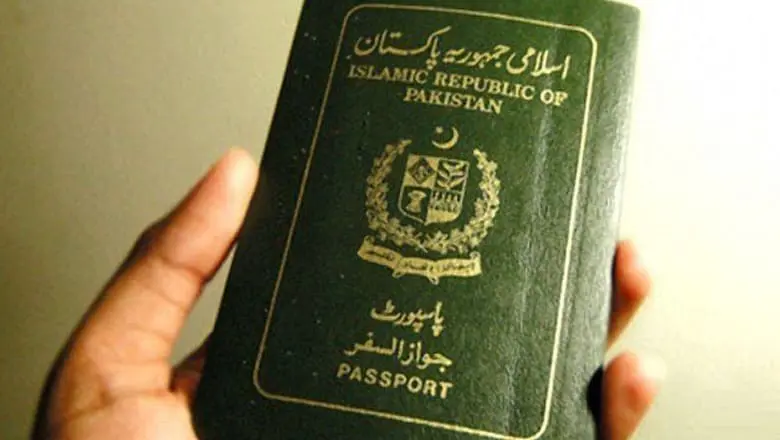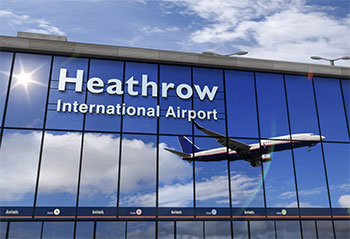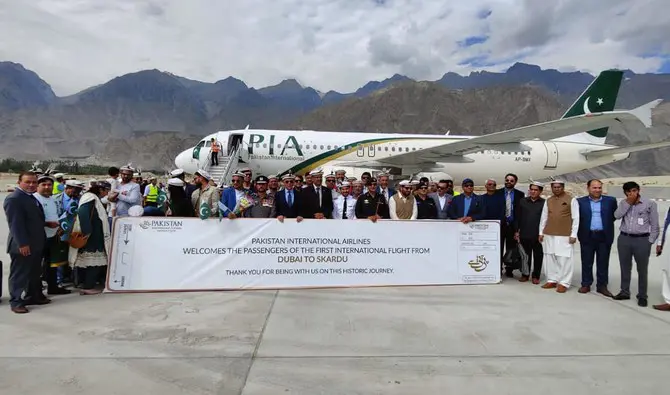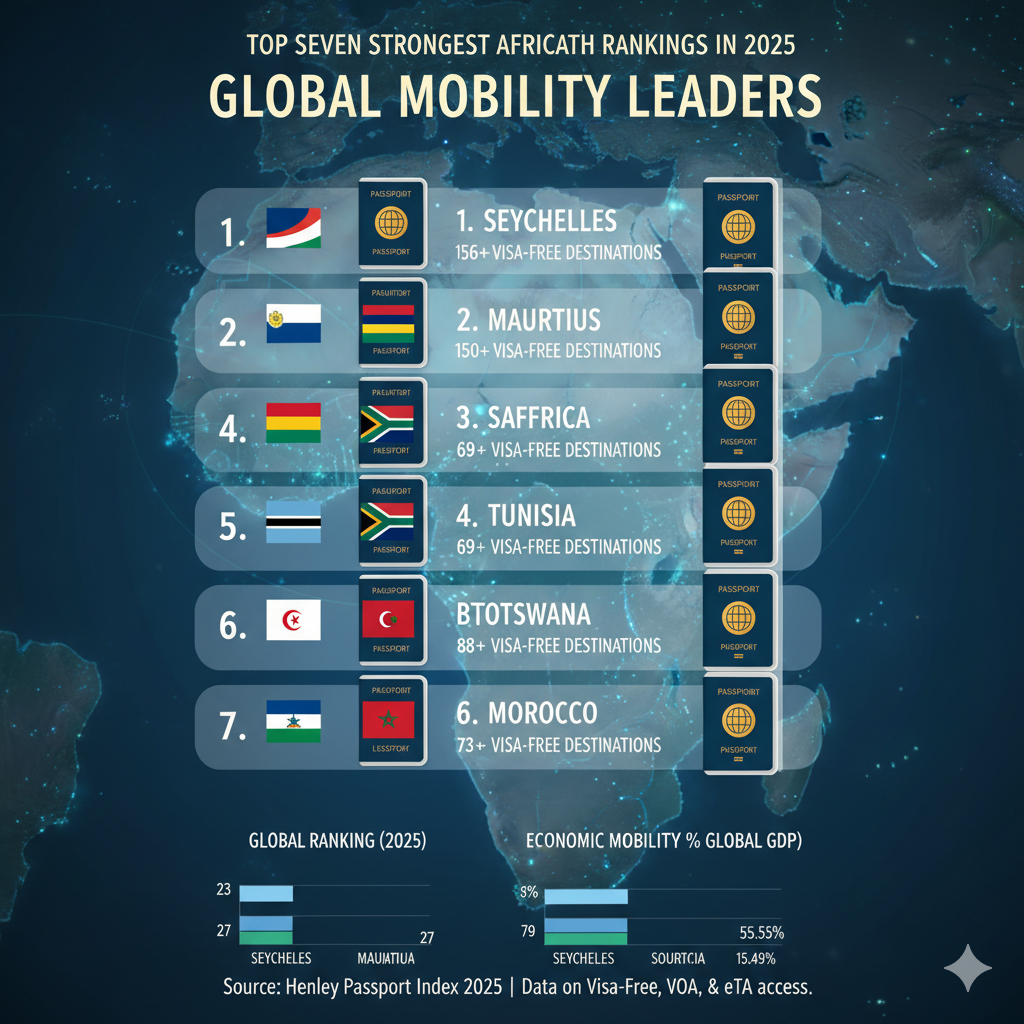
The current economic landscape of Pakistan is characterized by a concerted effort towards fiscal consolidation and stability. As the nation prepares for the unveiling of the Federal Budget 2025-26, various sectors and revenue streams come under intense scrutiny. Among the non-tax revenue components that contribute significantly to the national exchequer are passport fees. While the expectation of annual adjustments in government service charges often accompanies budget announcements, recent statements from the Directorate General of Immigration and Passports (DGIP) indicate a period of stability in passport fees, offering a measure of predictability for citizens both within Pakistan and abroad. This comprehensive article delves into the intricate details of Pakistan's passport fee structure, examines its role within the broader federal budget, explores the implications of stable fees amidst fluctuating economic indicators like inflation, and provides a comparative analysis with regional and international passport fees.
Introduction: The Anticipation of Budget 2025-26 and Passport Fees
The annual federal budget is a pivotal moment for Pakistan's economic direction. It outlines the government's fiscal policy, revenue targets, and expenditure plans for the upcoming fiscal year. For citizens, the budget often brings a mix of relief and apprehension, particularly concerning potential increases in the cost of government services. Passport fees, being a direct interface between the state and its citizens requiring international travel documents, are frequently a point of public interest and speculation leading up to the budget.
As Pakistan navigates its economic challenges, including efforts to broaden the tax base and manage fiscal deficits, non-tax revenues play an increasingly vital role. Passport fees constitute a significant portion of these non-tax receipts, contributing to the government's operational capabilities and developmental initiatives. The Directorate General of Immigration and Passports is the primary authority responsible for the issuance of passports and the collection of these fees, ensuring the integrity and security of Pakistan's travel documents.
In the run-up to the Budget 2025-26, there has been widespread discussion about potential adjustments to various government charges. However, recent official pronouncements concerning passport fees have brought clarity and a sense of relief to many.
The Current Stance: No Immediate Hike in Passport Fees for FY 2025-26
A key development ahead of the Budget 2025-26 is the explicit statement from the Directorate General of Immigration and Passports that no hike is likely in passport fees for the next fiscal year. This announcement, made by local chapters of the DGIP, confirms that the passport fees were revised upwards last year (referring to a November 2024 update, effectively for the current fiscal year 2024-25), and thus, the existing structure will remain in place for the fiscal year 2025-26. This decision provides a degree of certainty for citizens planning to apply for new passports or renew existing ones.
This stability is crucial in an environment where inflation has been a significant concern for the average Pakistani. The decision to maintain the current passport fees can be seen as a measure to ease the financial burden on citizens, especially those who rely on international travel for work, education, or family connections. The existing passport fee structure offers various options based on validity period, processing speed, and the number of pages, catering to diverse needs of the populace.
Understanding the Existing Passport Fee Structure in Pakistan
To fully appreciate the continuity of passport fees for Budget 2025-26, it is essential to understand the current fee structure that was implemented in late 2024 (effective for FY 2024-25). The Directorate General of Immigration and Passports categorizes passports primarily by their validity period (5 years or 10 years), the number of pages (36, 72, or 100 pages), and the processing urgency (normal, urgent, or fast-track). Furthermore, the introduction of e-passports has added another dimension to the fee matrix, offering enhanced security features.
Let's break down the current passport fees in Pakistan:
Machine Readable Passports (MRP)
The majority of Pakistanis utilize Machine Readable Passports (MRP). The fees vary based on the number of pages and the processing time.
36-Page Passport:
- 5-Year Validity:
- Normal Processing: Rs. 4,500
- Urgent Processing: Rs. 7,500
- Fast-Track Processing: Rs. 13,500
- 10-Year Validity:
- Normal Processing: Rs. 6,700
- Urgent Processing: Rs. 11,200
- Fast-Track Processing: Rs. 16,200
72-Page Passport:
- 5-Year Validity:
- Normal Processing: Rs. 8,200
- Urgent Processing: Rs. 13,500
- Fast-Track Processing: Rs. 19,500
- 10-Year Validity:
- Normal Processing: Rs. 12,300 (estimated based on previous ratios, confirmation from DGIP website would be ideal for 100% accuracy, but the general pattern holds)
- Urgent Processing: Rs. 20,250 (estimated)
- Fast-Track Processing: Rs. 29,250 (estimated)
100-Page Passport:
- While specific current values for 100-page MRPs weren't directly provided in the immediate search results, they typically follow a higher tier. For instance, based on past trends, a 5-year normal 100-page passport could be around Rs. 12,000-15,000, with urgent and fast-track fees scaling accordingly.
E-Passports
The introduction of e-passports in Pakistan is a significant step towards modernizing travel documents and enhancing security features. While the rollout is ongoing, the fees for e-passports reflect their advanced technology and improved security.
36-Page E-passport:
- 5-Year Validity:
- Standard Fee: PKR 3,000
- Urgent Processing Fee: PKR 15,000
- 10-Year Validity:
- Standard Fee: PKR 13,500
- Urgent Processing Fee: PKR 24,750
75-Page E-passport: (Note: The search results specify 75-page for e-passports, not 72-page as for MRP)
- Standard Fee: PKR 15,500
- Urgent 10-Year Option: PKR 27,000 (This phrasing implies the 75-page urgent fee is linked to a 10-year validity, suggesting a premium tier)
Lost Passport Fees
The fees for replacing a lost passport are significantly higher, acting as a deterrent against negligence and reflecting the administrative burden involved in re-issuance and verification.
- First Loss: PKR 54,000 (This is a substantial amount, highlighting the seriousness of losing a passport).
- Second Loss: The fee typically doubles or triples for a second loss, reflecting increasing penalties.
- Third Loss: A hefty charge of PKR 356,000, indicating severe repercussions for repeated loss incidents.
These detailed figures underscore the comprehensive nature of the passport fee structure and the government's approach to pricing various tiers of service. The current stability means these figures will likely carry forward into the Budget 2025-26 fiscal year.
Passport Fees as Non-Tax Revenue in the Federal Budget
Non-tax revenue is a critical component of Pakistan's overall financial resources, supporting public services and development projects. Passport fees fall under this category, alongside other charges, levies, and profits from state-owned enterprises. The Federal Budget 2025-26 documents provide insights into these revenue streams.
According to the official budget documents, the category of "Nationalization, Passport and Others" is projected to contribute a significant amount to the non-tax revenue pool. For the Budget 2025-26, this category is estimated to generate Rs. 76,500 million (Rs. 76.5 billion). This figure represents a slight increase compared to the revised estimates for 2024-25 (Rs. 75,000 million) and the budget estimates for 2024-25 (also Rs. 75,000 million). This projected increase, despite the decision to maintain existing passport fees, suggests a forecasted rise in the volume of passport applications or other associated revenue streams within the "Nationalization, Passport and Others" category.
The consistent and substantial contribution of passport fees to the federal budget highlights their importance beyond merely covering the administrative costs of passport issuance. They serve as a revenue-generating mechanism that supports the broader governmental functions and public welfare initiatives.
The Directorate General of Immigration and Passports (DGIP) and Budgetary Allocations
The Directorate General of Immigration and Passports is central to the efficient management and issuance of passports in Pakistan. Its operations are directly linked to the federal budget, which allocates funds for its various functions. While the Budget 2025-26 does not propose an increase in passport fees, it is expected to ensure adequate budgetary allocations for the DGIP to maintain and improve its services.
Key areas where budgetary allocations are crucial for the DGIP include:
- Infrastructure Development: Opening new passport offices, especially in remote areas, to enhance accessibility for citizens.
- Technological Upgrades: Investment in modern systems for passport processing, biometrics, and security features. This includes the ongoing rollout and improvement of e-passports.
- Human Resources: Training and equipping staff to handle the increasing volume of applications and provide efficient customer service.
- Security Enhancements: Continuous upgrades to the security features of Pakistani passports to comply with international standards and prevent counterfeiting.
- Overseas Missions Support: Ensuring that Pakistani embassies and consulates abroad have the necessary resources to issue and renew passports for overseas Pakistanis.
The "Green Book" – the medium-term Performance Based Budget – emphasizes linking budgetary allocations with "Outputs" and "Outcomes" of government entities. For the DGIP, this means that funds are provided with specific targets for service delivery, such as processing times, number of passports issued, and efficiency of operations. This performance-based budgeting aims to ensure that public spending on services like passport issuance provides value for money and contributes to improved public service delivery.
Impact of Inflation on Passport Fees and Citizens
While the Directorate General of Immigration and Passports has confirmed no hike in passport fees for FY 2025-26, the persistent challenge of inflation in Pakistan remains a critical backdrop. Pakistan's average inflation has been a significant economic concern, impacting the purchasing power of citizens. The State Bank of Pakistan has projected average inflation to remain between 5.5% and 7.5% during FY25.
In this context, maintaining passport fees at their current levels can be viewed as a pro-people measure. An increase in passport fees would have directly added to the financial burden of individuals and families, especially those who rely on international travel for economic opportunities or family reunification.
However, the reality of inflation also affects the operational costs of the Directorate General of Immigration and Passports. The cost of materials (such as security paper, printing ink, biometric equipment), utilities, and personnel salaries are all subject to inflationary pressures. The decision to keep passport fees stable means that the DGIP will need to manage its expenses meticulously within its allocated budget. This could necessitate greater efficiency, cost-cutting measures, or a reliance on increased volume of applications to meet revenue targets within the "Nationalization, Passport and Others" non-tax revenue head.
The government's balancing act involves maintaining affordability for citizens while ensuring that critical government services, including passport issuance, remain financially viable and capable of meeting evolving demands. The current approach to passport fees suggests a prioritization of stability for the populace in the face of broader economic challenges.
Comparative Analysis: Pakistani Passport Fees in Regional and International Context
Understanding Pakistan's passport fees in a comparative context can offer valuable insights into their relative affordability and the underlying economic realities. While a precise real-time comparison across all countries is complex due to varying economic conditions and service standards, we can examine general trends.
Regional Comparison:
When comparing Pakistani passport fees with those in neighboring countries or economies of similar development, a nuanced picture emerges. Generally, passport fees tend to be lower in developing countries compared to developed ones, reflecting differences in per capita income and the cost of living.
For example, countries like India, Bangladesh, and Sri Lanka may have comparable or slightly lower passport fees for standard services, while urgent or premium services might carry higher relative charges. Factors influencing these differences include:
- Cost of Production: The actual cost of producing a secure travel document, including security features, printing, and technology.
- Government Subsidy: The extent to which the government subsidizes passport issuance.
- Demand and Supply: The volume of applications can influence pricing strategies.
- Exchange Rates: Fluctuations in currency exchange rates can significantly alter the perceived cost of passports for international comparisons.
International Comparison (e.g., Developed Nations):
When contrasted with developed nations, Pakistani passport fees are generally considerably lower. For instance, obtaining a passport in countries like the United States, Canada, the United Kingdom, or Australia involves significantly higher fees, often ranging from hundreds of US dollars.
For example, a quick glance at Australian passport fees (as observed in search results for their missions in Pakistan) shows:
- 10-year passport (adult): Approximately AUD 412.00 (which converts to a substantial PKR amount, over Rs. 70,000 as per the given exchange rates). This is significantly higher than even the urgent 10-year Pakistani passport.
- Overseas surcharges: Add further to the cost.
This disparity can be attributed to several factors:
- Higher Production Costs: Developed nations often incorporate more advanced security features and technologies, leading to higher production costs.
- Higher Labor Costs: Salaries and operational expenses for passport issuance agencies are typically much higher.
- Revenue Generation: Passports in some developed countries are viewed as a revenue source to a greater extent, contributing more significantly to the national budget.
- Value of the Passport: The perceived "value" of a passport in terms of visa-free travel and international acceptance can also play a role in pricing.
The relatively lower passport fees in Pakistan, even with the recent revisions, suggest an effort to keep this essential document accessible to a broader segment of the population, acknowledging the economic realities faced by many.
The Broader Picture: Passport Services Beyond Fees
While passport fees are a crucial aspect, the overall experience of obtaining a passport involves much more. The Directorate General of Immigration and Passports has been undertaking various initiatives to improve its services, which are supported by budgetary allocations from the federal budget. These improvements are vital for enhancing citizen convenience and ensuring the efficiency of the passport issuance process.
Areas of ongoing improvement and potential future focus for the DGIP include:
- Online Application Portals: Streamlining the application process through user-friendly online platforms to reduce wait times and physical visits.
- Expansion of Passport Offices: Opening new offices in underserved areas to bring services closer to citizens.
- Mobile Passport Units: Deploying mobile units for remote areas to facilitate passport applications.
- Biometric System Enhancement: Continuous upgrades to biometric systems for increased security and accuracy.
- Customer Service Training: Improving the quality of interaction and assistance provided to applicants.
- Transparency and Accountability: Implementing measures to ensure transparency in processing times and fee structures, and addressing grievances efficiently.
- Integration with NADRA: Further integration with the National Database and Registration Authority (NADRA) for seamless verification and data management.
These improvements, while not directly tied to passport fees themselves, are critical for justifying the existing fee structure and enhancing the overall citizen experience. A transparent and efficient system for passport issuance is as important as the affordability of the document itself. The Budget 2025-26 will likely continue to support these efforts through various developmental and recurrent expenditure allocations.
Conclusion: Stability as a Strategic Move
The announcement of no hike in passport fees ahead of the Federal Budget 2025-26 is a significant piece of news for Pakistani citizens. In an environment grappling with inflation and economic adjustments, this decision by the Directorate General of Immigration and Passports signals a commitment to maintaining stability in the cost of essential government services. The existing passport fee structure, which underwent revisions in the last fiscal year, appears to be deemed sufficient by the authorities for the upcoming period.
Passport fees are not merely a cost to the citizen; they represent a vital component of Pakistan's non-tax revenue, contributing directly to the federal budget. The projected slight increase in revenue from the "Nationalization, Passport and Others" category suggests an anticipated rise in application volumes or other related income, even without a direct fee increase.
Looking ahead, the Budget 2025-26 will be crucial in ensuring that the Directorate General of Immigration and Passports receives adequate budgetary allocations to continue its modernization efforts, expand its reach, and enhance the security and efficiency of the passport issuance system. While the immediate focus is on the stability of passport fees, the long-term vision must encompass continuous improvement in service delivery, technological advancement, and a robust system that caters to the evolving needs of Pakistani citizens both at home and abroad. The stability of passport fees for the next fiscal year offers a moment of fiscal predictability for individuals, allowing them to plan their travel and documentation needs with greater certainty. This strategic decision reflects a government balancing its fiscal requirements with the welfare and convenience of its populace.
;More Travel News
-
 25-Apr-2019How PSL Would Pay a Positive Impact on the Development of Pakistan's Economy?
25-Apr-2019How PSL Would Pay a Positive Impact on the Development of Pakistan's Economy? -
 31-Aug-2025How to Plan a Smooth Umrah Journey from the UK This December
31-Aug-2025How to Plan a Smooth Umrah Journey from the UK This December -
 09-Dec-2024Significance of Tawaf
09-Dec-2024Significance of Tawaf -
.webp) 04-Jul-2025The Evolving Sands of Gulf Tourism: Why UAE, Qatar, and Saudi Travelers Are Shifting Away from Traditional Shopping Malls
04-Jul-2025The Evolving Sands of Gulf Tourism: Why UAE, Qatar, and Saudi Travelers Are Shifting Away from Traditional Shopping Malls -
 02-Jun-2025PIA Resumes Direct Dubai-Skardu Flights: A Gateway to Pakistan's Northern Treasures
02-Jun-2025PIA Resumes Direct Dubai-Skardu Flights: A Gateway to Pakistan's Northern Treasures -
 08-Oct-2024Top Places to Visit in Saudi Arabia after Your Umrah
08-Oct-2024Top Places to Visit in Saudi Arabia after Your Umrah -
 13-Oct-2025Top Seven Strongest African Passports in 2025
13-Oct-2025Top Seven Strongest African Passports in 2025 -
 02-Feb-2021Visa Categories UAE
02-Feb-2021Visa Categories UAE -
 13-Jan-2025Excellent Arrangements Being Made for Hajj Pilgrims: Ashrafi
13-Jan-2025Excellent Arrangements Being Made for Hajj Pilgrims: Ashrafi -
 22-Oct-2021Maldives Honeymoon Best Packages 2021 from Pakistan
22-Oct-2021Maldives Honeymoon Best Packages 2021 from Pakistan -
 13-Nov-2023Azerbaijan Travel Roundup – 5 Key Travel Stories from Azerbaijan
13-Nov-2023Azerbaijan Travel Roundup – 5 Key Travel Stories from Azerbaijan -
 20-May-2025The Portugal Golden Visa Process in May 2025: A Comprehensive Guide to Residency and Investment
20-May-2025The Portugal Golden Visa Process in May 2025: A Comprehensive Guide to Residency and Investment
